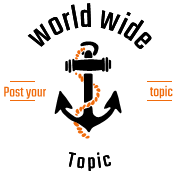There are different kinds of Contracts For Difference (CFD) that traders can choose from. These types of CFDs vary from one region to another and are offered by brokers to their clients. There are also differences in each type of CFD trading, most of which vary on the financial asset subjected to every contract.
Markets Covered By CFD
A very good thing about Contracts for Difference (CFD) is that they can be traded on a variety of financial instruments. This is all depending on the access that the CFD broker will give to the trader, the ability to trade in different markets continue to expand. These are the main markets to trade CFD:
- Global stock CFDs – United Kingdom, United States and Asian and Europe
- Forex CFDs
- Stock Index CFDs – Dow, FTSE, NIKKEI, NASDAQ, and more
- Metals and energy CFDs – natural gas, gold, silver, uranium, oil, and more
- Commodity CFDs – grains and soft commodities
- Industrial sector CFDs – banks, technology, oil and gas, others
Different Types of CFDs
Share CFDs
CFDs of this kind are mostly traded in the marketplace. With this type of contract, the price of the CFD is from the underlying asset which is the subject of the CFD. If you have experience in stocks trading, you will feel that share trading is somewhat the same. But, you must be aware that there are still a couple of differences that you need to know.
Index CFDs
Just like its name, Index CFDs are based on the performance of a given index. Traders tend to love Index CFDs because of its volatility, high leverage, and volatility. All these things make up a good investment opportunity. Some popular indices include the Australian Stock Exchange, Dow Jones, London Stock Exchanges, Nikkei, and NASDAQ. Some of the advantages of Index CFDs are low trading costs, huge trading volume, low margin, accessibility to the international market, and high leverage.
Commodity CFDs
Commodities are those physical things that are highly in-demand. Investors have classified commodities into two categories – soft commodities and hard commodities. Hard commodities are those products that are mined while soft commodities are those that are grown.
Treasury CFDs
If you want to speculate on the rise or fall of the value of those treasury notes, then you can pick the Treasury CFD. The notes which are commonly traded are US Treasury notes like Australian Treasury Bonds, US Bonds, and Euro Bond.
Sector CFDs
Sector CFDs allow you to see the growth of a certain economy. For instance, you choose healthcare. You will not have to view the individual companies but the overall economic picture instead. You have automatic diversification leading to reduced volatility.
Inflation CFDs
Traders in the United Kingdom are allowed to trade on Inflation. The spread of Inflation CFD is 0.1 and the margin requirement is 5%. You can use this CFD to avoid big losses thru hedging.
Carbon Trading CFDs
This CFD is very recent and is both political and volatile. This carbon pollution program allows its user to release a specific amount of gas where a permit is required. Once they progress, they can now sell the excess to other people in need of it.




